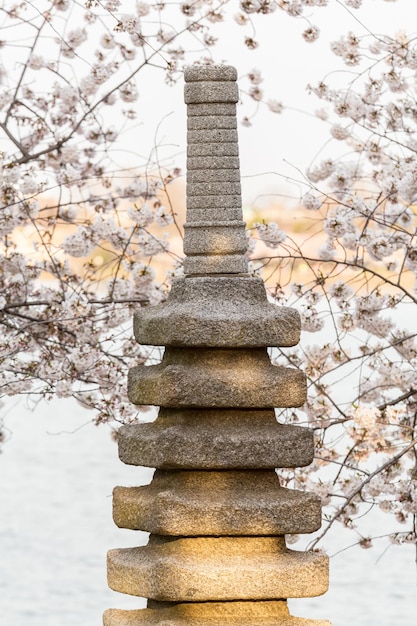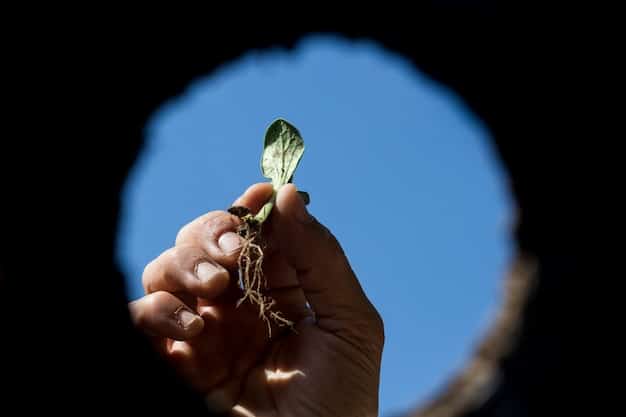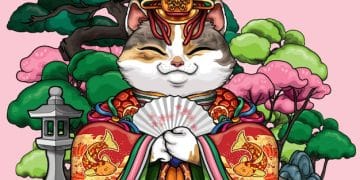Understanding Japanese Concepts: A Deep Dive into Culture

Exploring various integral Japanese concepts provides a profound understanding of Japan’s rich cultural tapestry, revealing the intricate philosophies that shape daily life, art, and values.
Delving into the profound philosophies that underpin Japanese culture offers a unique lens through which to appreciate its enduring beauty and complexity. From ancient traditions to modern interpretations, Understanding the Japanese Concept of various core tenets unveils a world shaped by harmony, respect, and meticulous craftsmanship, providing invaluable insights into what makes Japan so distinctively captivating.
The Essence of Wabi-Sabi: Embracing Imperfection
Wabi-sabi is a concept central to Japanese aesthetics, yet it remains elusive in direct translation. It celebrates the beauty found in imperfection, impermanence, and incompleteness. This philosophy encourages an appreciation for the natural aging process and the unique character that arises from flaws and transience.
Originating from Zen Buddhism, wabi-sabi emerged as a counterpoint to ornate, symmetrical, and mass-produced styles. It finds beauty in humility, simplicity, and authenticity, often seen in rustic tea ceremony ware or gracefully aged architecture. It’s about finding the profound in the humble, the beauty in the ordinary.
The Philosophy of Impermanence
At its core, wabi-sabi acknowledges the fleeting nature of existence. It reminds us that nothing lasts forever, nothing is finished, and nothing is perfect. This acceptance of transience leads to a deep appreciation for the present moment and the unique characteristics of objects that bear the marks of time and use.
- Asymmetry: Valuing unevenness and irregularity over perfect symmetry.
- Simplicity: Embracing minimalism and the absence of superfluous decoration.
- Naturalness: Appreciating textures and forms as they appear in nature, unfined and raw.
- Patina: Recognizing the beauty that comes with age, wear, and changing conditions.
The practice of wabi-sabi encourages a shift in perspective, moving away from the pursuit of flawless perfection towards an embrace of the natural cycle of growth, decay, and regeneration. It’s not about accepting less, but about seeing more in what is already around us, appreciating the story that objects and environments tell through their evolution.
Understanding wabi-sabi opens doors to appreciating many facets of Japanese art and design, from tea ceremonies and ikebana (flower arranging) to specific architectural styles and pottery. It is a philosophy that subtly permeates much of Japanese aesthetic sensibility, influencing how beauty is perceived and created.
Ikigai: Finding Your Purpose in Life
Ikigai is a Japanese concept that translates roughly to “a reason for being” or “a reason to wake up in the morning.” It represents the intersection of what you love, what you are good at, what the world needs, and what you can be paid for. Discovering your ikigai is seen as a path to a long, fulfilling, and happy life.
This concept is not just about professional ambition; it encompasses all aspects of life, encouraging individuals to find joy and meaning in their daily activities. It promotes a holistic approach to well-being, emphasizing balance and harmony between personal passions and societal contributions.
Components of Ikigai
To identify one’s ikigai, practitioners often explore four key dimensions, visualized as overlapping circles.
- What you love: Your passions, hobbies, and activities that bring you joy.
- What you are good at: Your talents, skills, and areas of expertise.
- What the world needs: Contributions you can make to society, addressing needs or problems.
- What you can be paid for: Your profession, career, or ways to sustain yourself financially.
The sweet spot where all four intersect is considered your ikigai. It’s a dynamic concept, suggesting that one’s purpose can evolve over time as life experiences and priorities change.
While often associated with longevity and vitality, particularly among the residents of Okinawa, Japan, ikigai is not merely about extending life. It’s about enriching it, ensuring that each day is lived with intention and satisfaction. It encourages continuous self-reflection and alignment of personal values with actions.
The journey to finding one’s ikigai is deeply personal and often iterative, involving exploration and experimentation. It advocates for living a life of purpose, where one’s efforts contribute to both personal well-being and the greater good, fostering a sense of fulfillment and belonging within the community.
Kaizen: Continuous Improvement and Progress
Kaizen, meaning “good change” or “improvement” in Japanese, is a philosophy that focuses on continuous improvement of processes in all aspects of life. While widely adopted in business and manufacturing, particularly within the Toyota Production System, its principles extend to personal development, relationships, and daily routines.
The core idea of kaizen is that small, incremental changes made consistently over time can lead to significant positive outcomes. It rejects the notion of perfection as a final destination, instead promoting ongoing evolution and refinement.

Implementing Kaizen in Daily Life
Applying kaizen involves a mindset of always looking for ways to do things better, no matter how minor the potential improvement. It encourages active participation from everyone, fostering a culture where ideas for improvement are welcomed and implemented.
- Identify small inefficiencies: Look for minor bottlenecks or areas where things could be smoother.
- Implement small changes: Don’t wait for a major overhaul; tiny adjustments can be made immediately.
- Measure and adapt: Observe the impact of the changes and be open to further modifications.
- Repeat the cycle: Continuous improvement means never-ending observation and adaptation.
Kaizen is not about drastic transformation or sudden innovation, but rather about a steady, disciplined approach to progress. It emphasizes consistency and persistence, recognizing that compounding small improvements yields powerful results over the long term. This approach reduces resistance to change, as small adjustments are less daunting than large-scale overhauls.
In a personal context, kaizen can manifest as optimizing morning routines, learning new skills incrementally, or enhancing communication with loved ones through small, consistent efforts. In any setting, it cultivates a culture of learning and evolution, making improvement an integral, natural part of the ongoing process rather than a sporadic event.
Omotenashi: Unparalleled Hospitality
Omotenashi is the distinct Japanese approach to hospitality, characterized by anticipating guests’ needs and catering to them wholeheartedly, without expecting anything in return. It goes beyond mere service; it is an intuitive and deeply respectful form of care that aims to create a memorable and profoundly comfortable experience for the guest.
This concept is deeply embedded in Japanese culture, influencing everything from the meticulously arranged tea ceremony to the attentive service found in traditional ryokan (Japanese inns) and modern businesses alike. It emphasizes empathy, foresight, and a genuine desire to put the guest first, often sublimating one’s own needs.
The Spirit of Anticipation and Selflessness
Omotenashi is not about elaborate gestures but about thoughtful details and a mindset of selfless devotion to the guest’s comfort. It involves observing, understanding, and proactively addressing needs before they are even voiced, reflecting a deep respect for the individual.
Considered a fundamental aspect of Japanese politeness and social harmony, omotenashi is often practiced without fanfare; its beauty lies in its subtlety and genuine intent. It’s about creating an atmosphere where the guest feels truly valued and at ease, anticipating desires that might not even be consciously recognized by the guest themselves. This subtle attention to detail ensures a seamless experience.
The principle of no expectation of reward is crucial to omotenashi. It is given freely, out of a genuine desire to ensure the guest’s comfort and satisfaction, rather than as a transactional exchange. This deep-seated commitment elevates simple interactions to genuine acts of care.
From the precise way a dish is presented to the thoughtful provision of amenities, omotenashi permeates all facets of Japanese service. It embodies a philosophy of meticulousness and foresight, ensuring every interaction contributes to an exceptional and truly welcoming atmosphere. This cultural practice reflects a profound respect for others, enhancing relationships and creating lasting positive impressions.
Mottainai: The Philosophy of Avoiding Waste
Mottainai is a deeply ingrained Japanese concept expressing regret over waste. It embodies the profound understanding that everything has value and should be used to its fullest potential. This philosophy extends beyond mere environmentalism; it is a spiritual and ethical stance against squandering resources, whether tangible goods, time, or talent.
Rooted in traditional Japanese agrarian society, where resources were precious and scarcity was a constant reality, mottainai encourages respect for the inherent value of objects and the effort that went into producing them. It promotes mindfulness in consumption and creativity in reuse.

The 4 Rs of Mottainai
While often associated with the Western “reduce, reuse, recycle,” mottainai adds a crucial fourth dimension – “respect.”
- Reduce: Minimizing consumption and production of waste.
- Reuse: Finding new purposes for items instead of discarding them.
- Recycle: Processing materials to create new goods, extending their lifecycle.
- Repair/Respect: Valuing items and extending their life through care and repair, acknowledging the resources and effort involved in their creation. This “respect” element elevates mottainai beyond a simple waste management strategy.
The concept encourages a sense of gratitude for what one possesses and a cautious approach to discarding anything. It promotes resourcefulness and ingenuity, seeing potential in what might otherwise be considered trash. This mindset encourages individuals to reflect on their consumption habits, fostering a more sustainable and conscientious lifestyle.
Mottainai manifests in everyday customs, such as finishing every grain of rice in a meal or carefully repairing damaged items rather than replacing them. It is a philosophy that fosters a deep connection to resources and promotes a sense of responsibility towards the environment and future generations, emphasizing thoughtful stewardship over consumption.
Ganbaru: Perseverance and Doing Your Best
Ganbaru, often translated as “do your best,” “try hard,” or “persevere,” is a fundamental Japanese concept that emphasizes resilience, patience, and unwavering effort in the face of adversity. It is not just about succeeding, but about the process of commitment and sustained effort, regardless of the outcome.
This spirit of ganbaru is deeply ingrained in Japanese society, influencing individuals from an early age in education, sports, and professional life. It promotes a strong work ethic and the belief that consistent perseverance can overcome obstacles, fostering personal growth and collective strength.
The Spirit of Resilience
Ganbaru is about more than just working hard; it involves an enduring spirit of resilience, pushing through difficulties with determination. It suggests that even when a task is challenging or the desired result seems distant, one must continue to make an earnest effort.
It’s a mindset that encourages individuals to always give their maximum effort, to not give up easily, and to continue striving for personal improvement and collective success. This concept can be seen in students studying tirelessly for exams, athletes training rigorously, or communities rebuilding after natural disasters, always pushing forward with steadfast resolve.
Ganbaru instills a sense of responsibility and dedication, where individuals are expected to commit fully to their tasks and roles. It fosters a culture of persistence, where challenges are viewed as opportunities for growth and refinement, rather than insurmountable barriers.
This ethos profoundly contributes to the harmony and efficiency within Japanese society, promoting a shared understanding of collective responsibility and individual commitment. It’s a powerful cultural driver, encouraging individuals to continually strive for excellence and contribute meaningfully to their communities, ensuring a resilient and forward-moving society.
Kintsugi: The Art of Repairing with Gold
Kintsugi, meaning “golden joinery,” is the Japanese art of repairing broken pottery with lacquer mixed with powdered gold, silver, or platinum. Rather than discarding broken items or disguising their flaws with invisible repairs, kintsugi highlights the breaks, treating them as part of the object’s history rather than something to be hidden.
This ancient technique transforms damage into an enhancement, creating unique patterns that tell a story of resilience and beauty born from fragmentation. Kintsugi is not just a repair method; it’s a profound philosophical approach that celebrates imperfection and resilience, finding beauty in what is broken and mended.
Embracing Flaws and Transformation
The philosophy behind kintsugi aligns closely with wabi-sabi, embracing imperfection and the transient nature of existence. It suggests that breakage is not the end but a part of the object’s life cycle, adding to its unique history and character.
- Resilience: The object becomes stronger and often more beautiful than before.
- History: The repairs tell a story, reflecting the object’s unique journey.
- Beauty in Imperfection: The gold-filled cracks highlight, rather than hide, the object’s past.
- Transformation: What was once broken is transformed into something new and unique.
Kintsugi embodies the idea that scars are not shameful but are integral to one’s story and can even enhance one’s beauty and value. It serves as a powerful metaphor for life, suggesting that our own experiences of breakage, loss, and repair can make us more resilient, valuable, and uniquely beautiful.
This art form encourages us to find beauty in our own flaws and the challenges we overcome, viewing them as integral parts of our personal tapestry. It emphasizes that imperfections and repairs contribute to a richer, more profound existence, celebrating the process of healing and transformation. Kintsugi thus offers a contemplative approach to understanding continuity and change.
| Concept | Brief Description |
|---|---|
| 🌿 Wabi-Sabi | Finding beauty in imperfection, impermanence, and natural aging processes. |
| 🎯 Ikigai | Discovering your life’s purpose by aligning passion, talent, need, and profession. |
| 📈 Kaizen | The philosophy of continuous, small, incremental improvement in all areas. |
| 🙏 Omotenashi | Anticipating and wholeheartedly fulfilling guests’ needs without expectation of return. |
Frequently Asked Questions About Japanese Concepts
Wabi-sabi is a broader aesthetic philosophy appreciating natural imperfection and impermanence. Kintsugi is a specific art form that physically repairs broken objects by highlighting the breaks with gold, making the repair part of the object’s beauty and history. While distinct, Kintsugi embodies the spirit of Wabi-sabi by celebrating flaws.
Ikigai contributes to a fulfilling life by helping individuals find their “reason for being” at the intersection of passion, purpose, vocation, and profession. This alignment fosters a deep sense of meaning and satisfaction, motivating one to wake up with enthusiasm and engage fully in daily activities, promoting overall well-being.
Yes, Kaizen is highly applicable to personal development. It encourages making small, continuous improvements in habits, skills, or routines over time. Instead of aiming for drastic overnight changes, Kaizen promotes consistent, incremental efforts that lead to significant, sustainable personal growth and enhanced efficiency in various aspects of life.
Omotenashi is unique due to its selfless nature and emphasis on anticipating guest needs without expecting anything in return. Unlike transactional Western hospitality, it focuses on intuitive foresight and genuine care, often going unannounced. It creates a deeply comfortable and memorable experience through meticulous attention to detail and profound respect for the guest.
Mottainai is much broader than just recycling; it is a philosophy expressing regret over waste and valuing resources. It encompasses reducing consumption, reusing items, repairing what’s broken, and recycling, but also includes a deeper “respect” for the inherent value of objects and the effort behind them, promoting overall mindfulness.
Conclusion
Exploring these profound Japanese concepts—from wabi-sabi’s appreciation for imperfection to ikigai’s pursuit of purpose, kaizen’s continuous improvement, omotenashi’s selfless hospitality, mottainai’s anti-waste ethos, and kintsugi’s celebration of resilience—offers more than just cultural insight. These philosophies provide timeless frameworks for living a more mindful, integrated, and fulfilling life. They transcend geographical and cultural boundaries, offering universal wisdom applicable to personal growth, professional excellence, and a deeper connection to the world around us. Embracing such perspectives can enrich our understanding of beauty, value, and the very essence of existence, fostering a greater sense of harmony and purpose.





